Ionizers: types, principle of operation and features of use
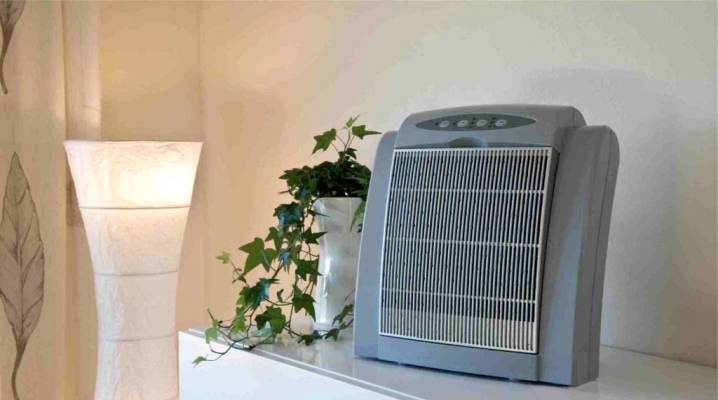
The ionizer is a popular electrical appliance and is widely used both in production and in everyday life. The high popularity of the device is due to its ability to significantly improve the quality of water and air and contribute to the creation of a favorable microclimate.
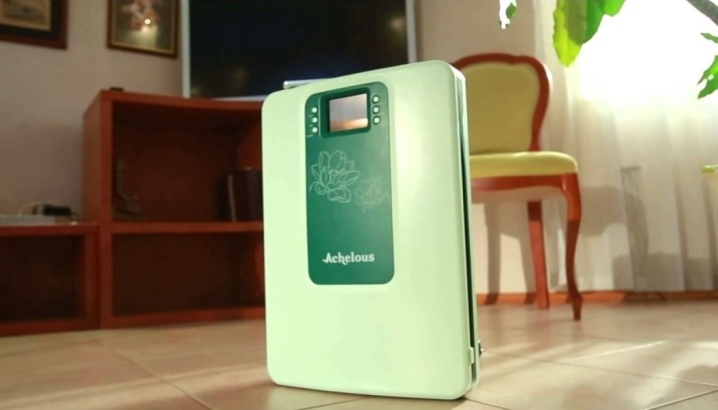
What it is?
The ionizer is presented in the form of a special device that generates ions by separating them from atoms and molecules. Once in the air, these particles change its composition and make it as close as possible to the sea or forest.
Ionized air has the most beneficial effect on a person's well-being, noticeably improves mood and relieves fatigue. The same applies to water: ionized liquid, getting into the human stomach, has a positive effect on internal processes, improves appetite and increases the body's resistance to infections.
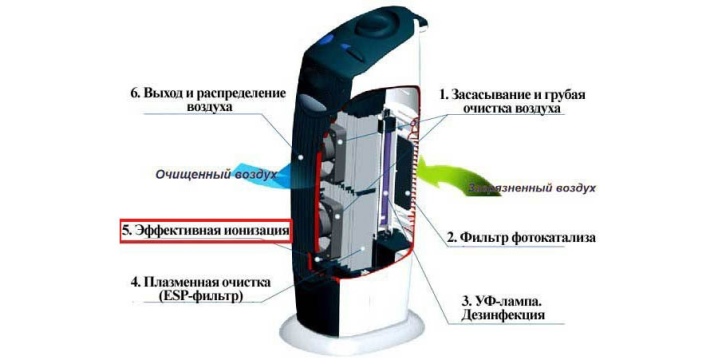
The simplest ionizer consists of the following parts:
- a rectifier that converts alternating current into constant voltage current;
- diode or ionic control system that sets and maintains the required current and voltage;
- an emitting device made in the form of thin metal needles, on which a pulse is generated, leading to the release of electrons;
- a fan that blows ions into the surrounding area and promotes their more even distribution.
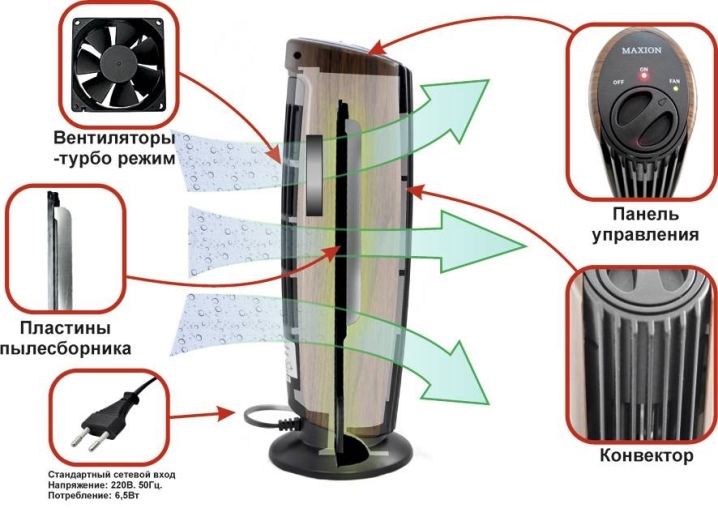
In addition, many air ionizers are equipped with an option to remove dust, smog and pollen from the air, for which they are equipped with special filters. Such devices are often called air purifiers with air ionization function. As for water ionizers, they are equipped with a multilevel filtration system and are equipped with ultraviolet lamps that act as a disinfectant. With the help of these devices, water is almost completely purified from heavy metals, harmful suspensions and chemicals.

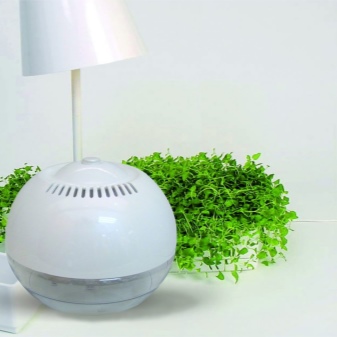
Ionization in water appliances is achieved thanks to titanium and platinum plates through which an electric current passes. This leads to the occurrence of redox reactions, which result in the separation of water into acidic and alkaline media. As a result, it is possible to obtain a substance that can kill bacteria and have a healing effect on the body.

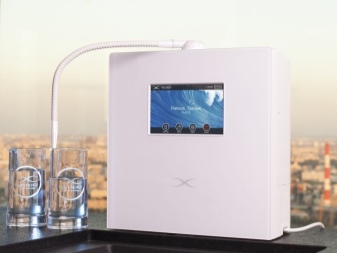
The scope of application of ionizers is quite wide. They are used to improve air quality in residential and industrial premises, in which they, under the influence of ionization, attract smoke, bacteria, dust and other fine particles to the positive electrode. As a result, the listed solids settle on the walls and ceiling, and the air becomes clean and fresh.
Regular use of the ionizer can lead to slight cooling of the room and rapid soiling of the walls.
As for water ionizers, they are actively used to clean swimming pools, to obtain "live" and "dead" water, to wash aquariums and purify industrial effluents.
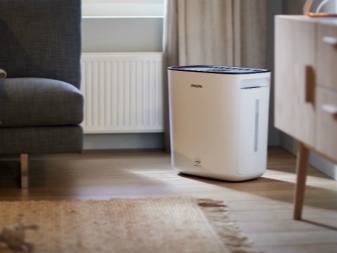

Principle of operation
The simplest household ionizers work according to the following principle: they create a stream of unbound electrons, which, in turn, combine with neutral oxygen molecules in the air masses. The result of such a combination is the ionization of the latter.
The process becomes possible thanks to the needle-shaped rods that electrify the space around them and generate free electrons. The rods are electrified due to the supply of direct current to them, the presence of which is provided by a rectifier. Once free, electrons instantly attract oxygen molecules and form a strong bond with them. As a result, negatively charged ions are formed, which have a beneficial effect on the body.


The scheme of operation of water ionizers is slightly different. So, the water passing through the device is first cleaned of harmful impurities, and then it is fed to the plates that are under electric current. As a result, the movement of alkaline ions of magnesium, potassium and manganese to the negative electrode occurs, which leads to saturation of water with these substances.
At the same time, antioxidants are being created - groups with a negative charge that have a positive effect on human health. The result of the ongoing reaction is the formation of alkaline water. In contrast, acidic substances such as bromine, phosphorus and chlorine are attracted to the positive electrode, thus creating acidic water.
In addition to the separation into "living" and "dead" water, the ionizer radically changes the structure of the liquid. This is achieved by crushing water clusters, numbering 12-16 molecules, into smaller associations, including no more than 6 molecules. As a result, the beneficial substances contained in the water penetrate faster into the cells of the body and are much more effective in removing toxins from it.
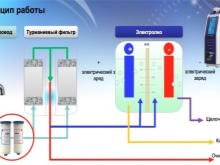
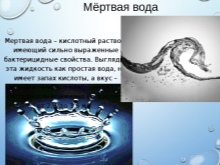

Benefit and harm
Despite the fact that the first ionizers were invented about 100 years ago, disputes about the appropriateness of their use are ongoing to this day... Supporters of the device argue that in addition to purifying the air from dust, tobacco smoke and harmful impurities, it is able to destroy bacteria, reduce static electricity, increase the body's resistance to diseases, increase appetite, relieve daytime sleepiness, activate thought processes, help reduce fatigue, and clear the respiratory tract.
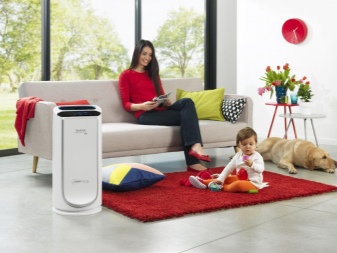
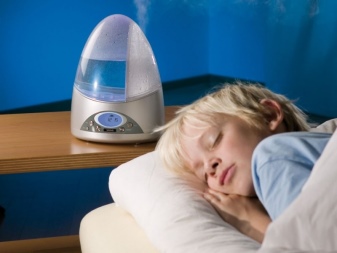
Opponents of the use of devices argue that with prolonged operation of the ionizer, all particles in the room become electrified and settle in the form of dust on the floor, walls, ceiling, furniture and clothing. The accumulation of large amounts of dust is especially noticeable directly near the ionizer itself, which makes us believe in the authenticity of this statement.
A way out of this situation can be daily wet cleaning of the room, as well as turning on the ionizer for only a short period of time. It is better for people to leave the room during the operation of the device.
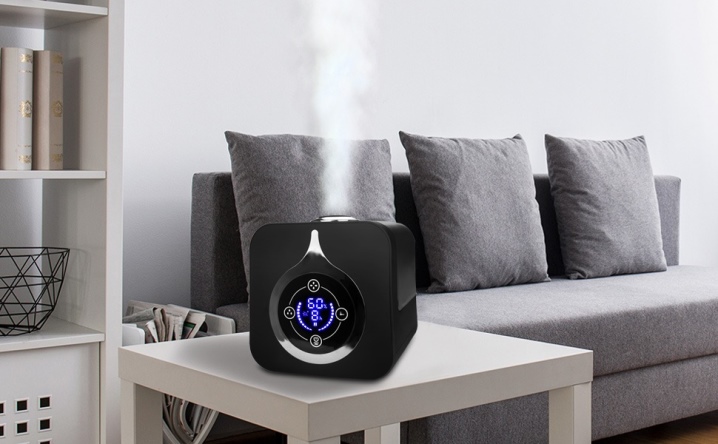
Another negative point is the deterioration of the well-being and physical condition of those present when the device is operated for too long. This is explained by an increase in the concentration of ozone molecules formed during the operation of the ionizer.
Moreover, air ionization contributes to the rapid transmission of infection from a sick person to a healthy person, which once again confirms the need to leave the room when the device is turned on. It is also not recommended to turn on the ionizer for a long time in a dry room, as its operation can lead to an increase in static electricity.
Thus, while the only indisputable fact of the benefits of ionizers is an improvement in air quality and a change in the mineral composition of water. Regarding health improvement, we can say the following: a direct therapeutic effect as a result of the device's impact on the human body has not been proven to date.

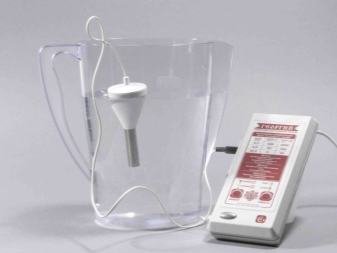
Species overview
Ionizers are classified according to several criteria, the main of which is the polarity of the air ions generated by the devices. According to this criterion, unipolar and bipolar models are distinguished, the difference between which is in the charge of the ions.
- Unipolar ionizers are capable of generating extremely negatively charged air ions. Such models are widely used in rooms with a large amount of electrical equipment. Particles with negative charges effectively counterbalance the huge number of positive ions that result from the work of numerous equipment in an enclosed space.
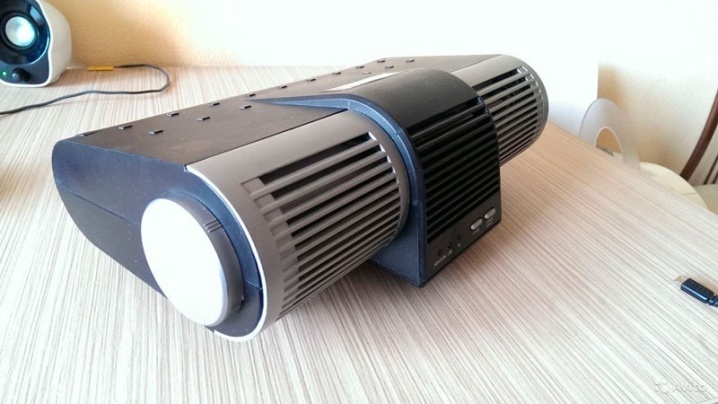
- Bipolar ionizers, unlike unipolar ones, they are capable of generating both negative and positively charged ions. Such devices are purchased for home use and are often installed in bedrooms, where the presence of ions of both polarities is important. Bipolar models are also suitable for installation in offices and enterprises, where they effectively deal with the neutralization of dust particles and freshen the air. Most of the devices have a modern appearance, are equipped with a remote control and consume a minimum of electricity.
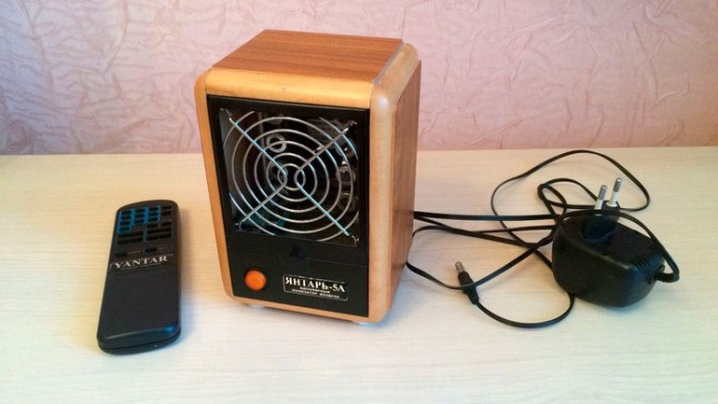
The next criterion for the classification of ionizers is the way oxygen molecules are ionized. On this basis, they are subdivided into ultraviolet, water, thermal, radioisotope, corona, plasma and electro-effluvial models.
- Ultraviolet devices work on the principle of alpha, beta, gamma and x-ray radiation, which is capable of generating ions. Such models are used in medical institutions for antibacterial treatment and purification of drinking water. In addition, ultraviolet ionizers promote faster hardening of varnish, resins and polymer substances, but this effect is not based on ionization, but on the action of photons that destroy the molecules of the irradiated substances and lead to the effect of destruction of surface layers.
However, it must be borne in mind that due to the formation of a large amount of ozone and nitrogen oxide, UV ionizers are intended exclusively for professional activities and are not suitable for domestic use.
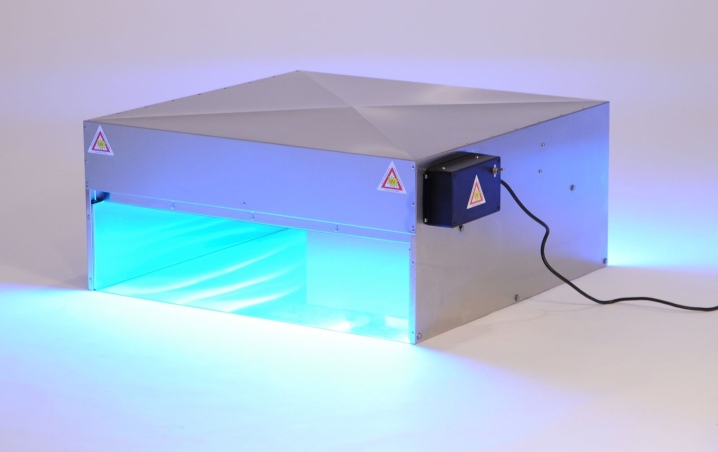
- Water ionizers in the course of their work, they emit a certain amount of ozone, which, when it collides with water molecules, contributes to the appearance of electrically charged water dust. The scope of use of hydroionizers is quite specific and is limited to the production of medicated electroaerosols with fine dispersion of preparations.
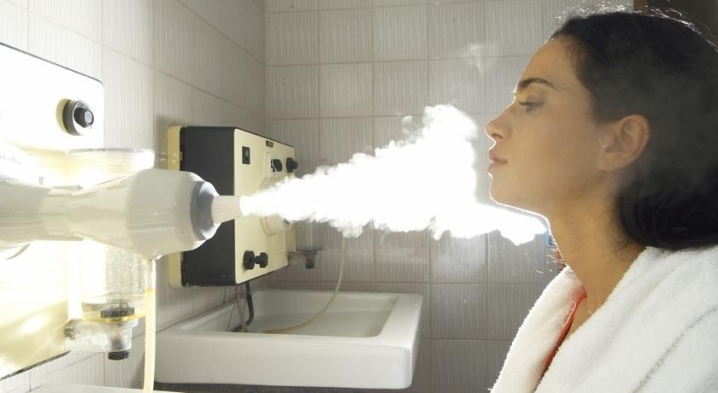
- Thermal ionizers begin to act due to the heating of the wire, which leads to the formation of free electrons. They, in turn, attach oxygen molecules to form negatively charged air ions.

- Radioisotope ionizers They are used in fire detectors, in which, thanks to ionization, ions of absorption particles - smoke, gases and aerosols - are recognized. If present, the air conductivity increases and the sensor gives an audible alarm.
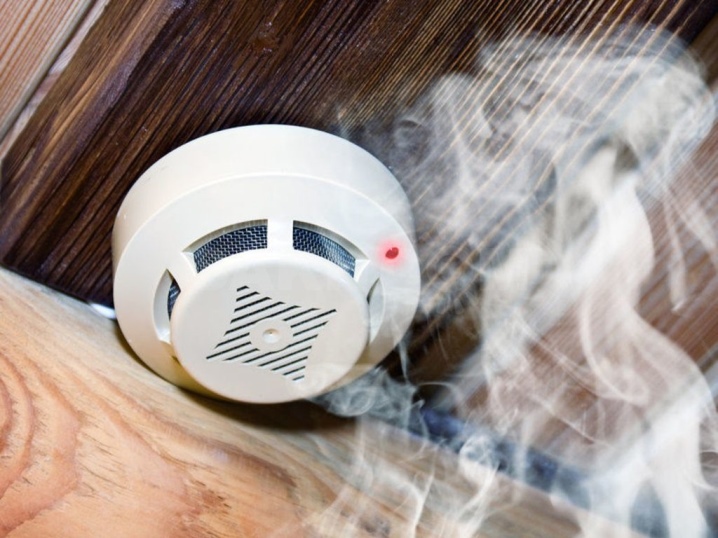
- Corona ionizers work on the principle of lightning and are capable of creating especially powerful discharges of electricity. As a result, a large number of free electrons are formed, which, when combined with oxygen, generate a huge number of negative ions. It is the bipolar corona ionizers that are recommended for use in residential premises and meet all hygiene and safety standards.
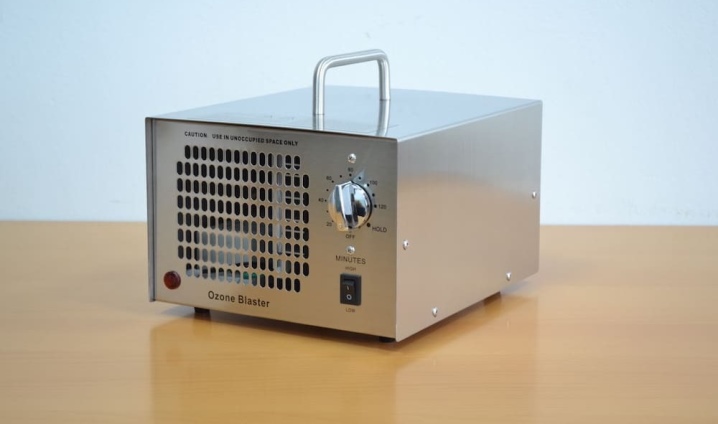
- Plasma ionizers function due to the combustion of alcohol in a metal vessel through which current passes. Oxygen released during combustion combines with electrons generated by the passage of electricity through the vessel, forming negative air ions.
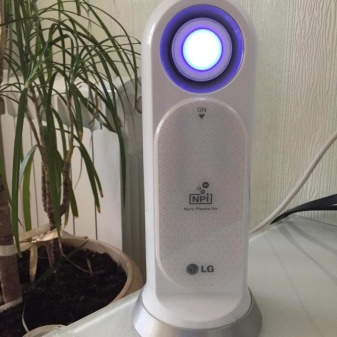
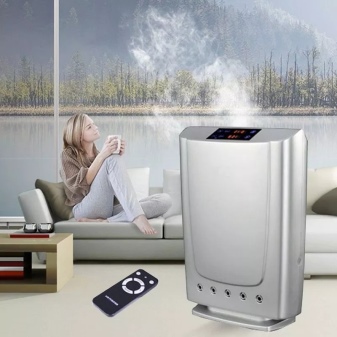
- Electrofluvial ionizers are equipped with sharp needles under high voltage. As a result, a large number of free electrons are generated at their tips, which, combining with oxygen molecules, form negatively charged aeroions.
As an example of ionizers of this type, we can consider the Chizhevsky chandelier, which, without any side effects, such as the release of radioactive particles, the formation of ozone or hydroperoxides, perfectly ionizes the air in the room and slightly refreshes it.

Another classification criterion is the scope of use of the devices. On this basis, distinguish air and water models.
Air models
Such devices are used for air ionization and are of active and passive type. The first ones are equipped with a fan that forcibly disperses the ions throughout the room. The second ones do not have a fan and work silently, while showing a high concentration of ions directly near the device itself, in other parts of the room it is noticeably lower.
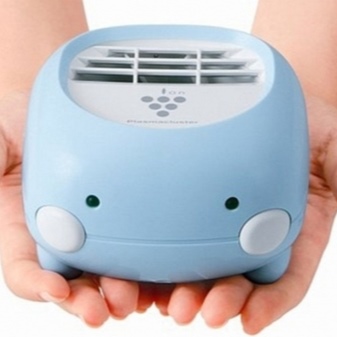
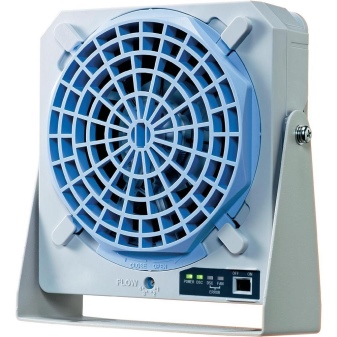
At the installation site, air ionizers are available in household, industrial, medical and automotive applications. The first and second are intended for use in industrial and residential premises, the third have a narrow specialization and are used in medical institutions, and the latter are installed in car interiors and powered by a cigarette lighter.
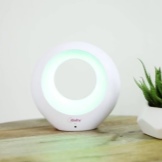
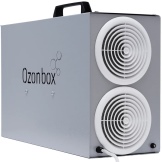
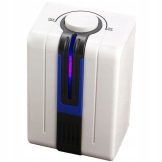
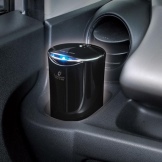
When considering air ionizers, one cannot fail to mention models for refrigerators that can kill harmful microorganisms and remove unpleasant odors from fish, meat and garlic. Refrigerating appliances are compact and run on batteries.
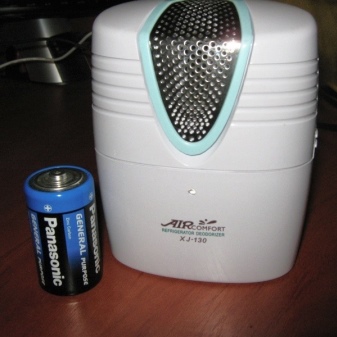
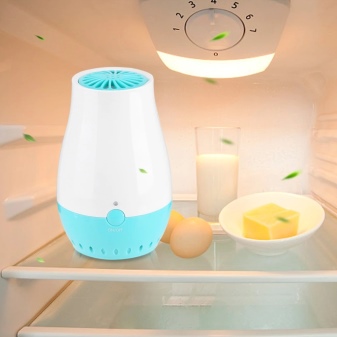
Water ionizers
The devices are designed for the disinfection of drinking water and its separation into acidic and alkaline. The latter function is especially valuable and is used in the treatment of various diseases.
Alkaline water is especially useful for humans. It is believed to improve the condition of the blood and remove the breakdown products of lactic acid.
The most advanced models are able to additionally enrich water with silver ions, after which it becomes suitable not only for drinking, but also for treating medical instruments and non-purulent wounds.
According to the method of ionization, water devices are divided into flow-through and storage devices. The first are connected to the water supply and work with the liquid "in real time". The latter are a vessel with a bowl, into which water is manually poured and used only at the end of the processing time.

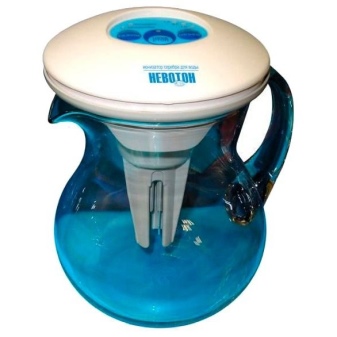
Manufacturers
The modern market offers a wide range of air and water ionizers. Below is an overview of popular models from well-known manufacturers, positive reviews of which are more common on the Internet.
- Polaris well known to the Russian consumer. The enterprise is located in China and provides household appliances to many countries of the world. As an example, consider a desktop air purifier-ionizer. Polaris PPA 0401i, capable of working indoors up to 30 sq.m.
The model has a power of 40 W, is equipped with a timer and a remote control, and is equipped with charcoal, air and photocatalytic filters. The weight of the device is 2.8 kg, the cost is 1300 rubles, the warranty is 1 year.

- Russian company Tion is engaged in the production of purifiers, humidifiers and air ionizers and has established itself well among consumers. As an example, consider the model Tion Clever, which is an air purifier with ionization function. The power consumption of the device is 35 W, the noise level does not exceed 40 dB, the area of the serviced room is 20 sq. M.
The model is equipped with three filters, including a modern HEPA filter, perfectly ozonates the room and is equipped with a self-diagnostic function. So, the device itself will warn its owners about the need for regular maintenance 30 days in advance. The ionizer disinfects the air, destroys spores of fungus and dust mites and is indicated for use by allergy sufferers. The device weighs 12 kg and costs 4990 rubles.
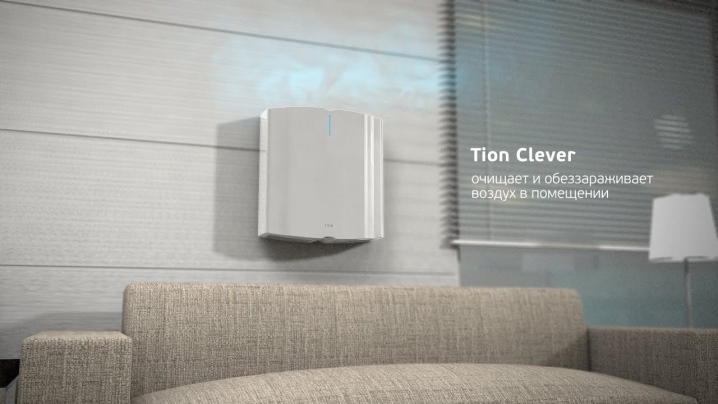
- Chinese manufacturer Xiaomi is engaged in the production of quality products, which are presented in a wide variety on the domestic market. For example, consider a car ionizer CleanFly Car Anion Air Purifier M1, which works absolutely silently and removes dust and foreign odors from the passenger compartment. The device is equipped with a digital display, saturates the air with anions and is equipped with built-in sensors that measure not only temperature and humidity, but also the concentration of harmful particles in the air. The model has a powerful battery that guarantees 10-hour operation of the device with the engine off, and its cost is 7300 rubles.
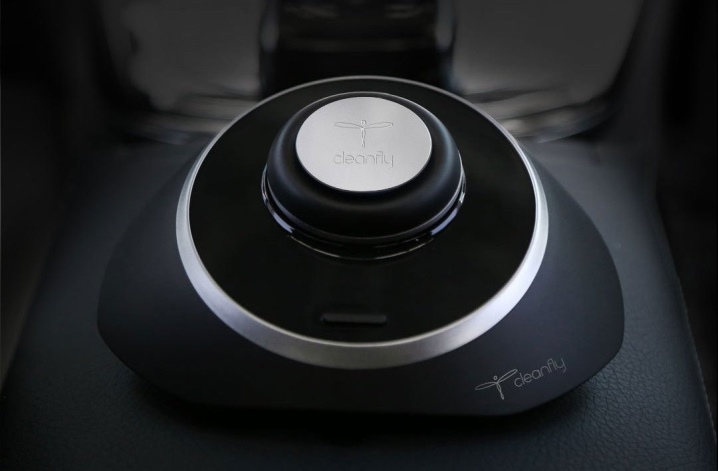
- Popular firm Vitek produces high quality and inexpensive ionizers. For example, an ultrasonic humidifier with air ionization has a power of 55 W, is equipped with a speed controller and is capable of serving rooms up to 35 square meters. The price of the model is 5590 rubles.

- South Korean company Allsbon manufactures a large number of ionizers, including those designed for water treatment. So, an alkaline ionizer Allsbon dion blue has a cartridge with seven degrees of purification, a regulator for adjusting the pH level of acidity, protection against voltage surges and is capable of operating in four modes. This allows you to give water purified with its help to small children and use it for medicinal purposes. The productivity of the device is 2 l / min., Power - 230 W, weight - 5 kg, cost - 49,500 rubles.
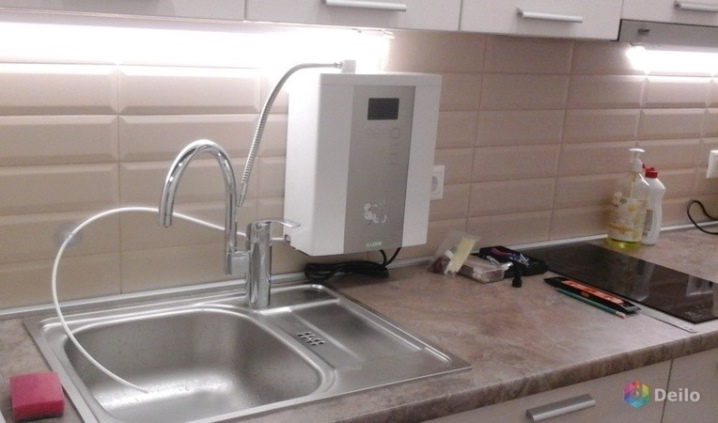
Instructions for use
In order for the device to serve for a long time, and its work was useful and safe, a number of simple rules must be followed:
- it is impossible to use the ionizer constantly, the device should be turned on once a day for 20-50 minutes;
- you should not approach a working device closer than a meter;
- it is forbidden to turn on the ionizer in the presence of children under the age of 1 month;
- switching on the ionizer must be alternated with wet cleaning of the room;
- smoking in a room with a working ionizer is unacceptable;
- it is not recommended to use the device at humidity above 80%.
Thus, with careful use and adherence to the rules of operation, the ionizer can become an irreplaceable assistant that improves the indoor climate and improves the quality of drinking water.
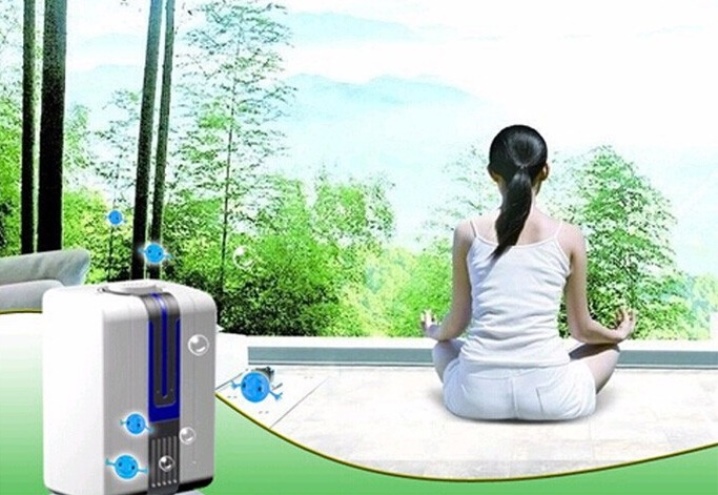
Next, watch the video with the doctor's recommendations for ionizers.











The comment was sent successfully.